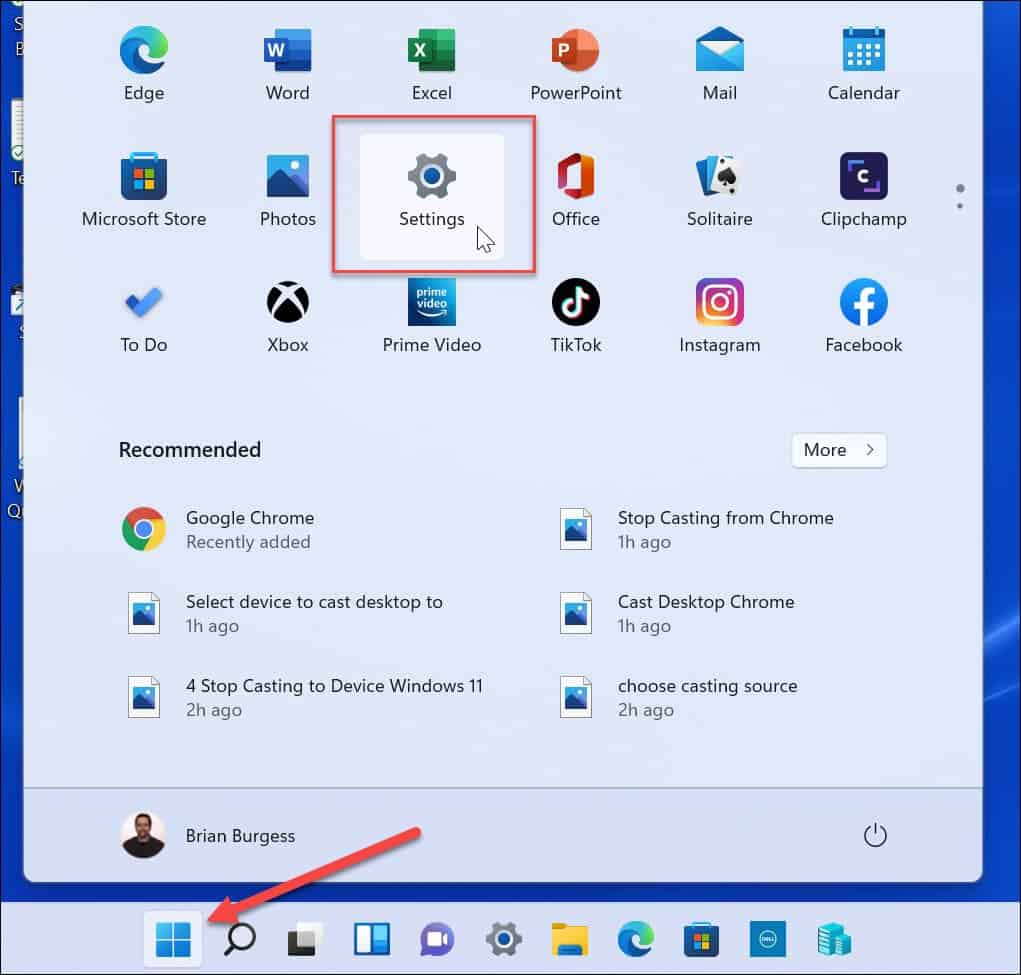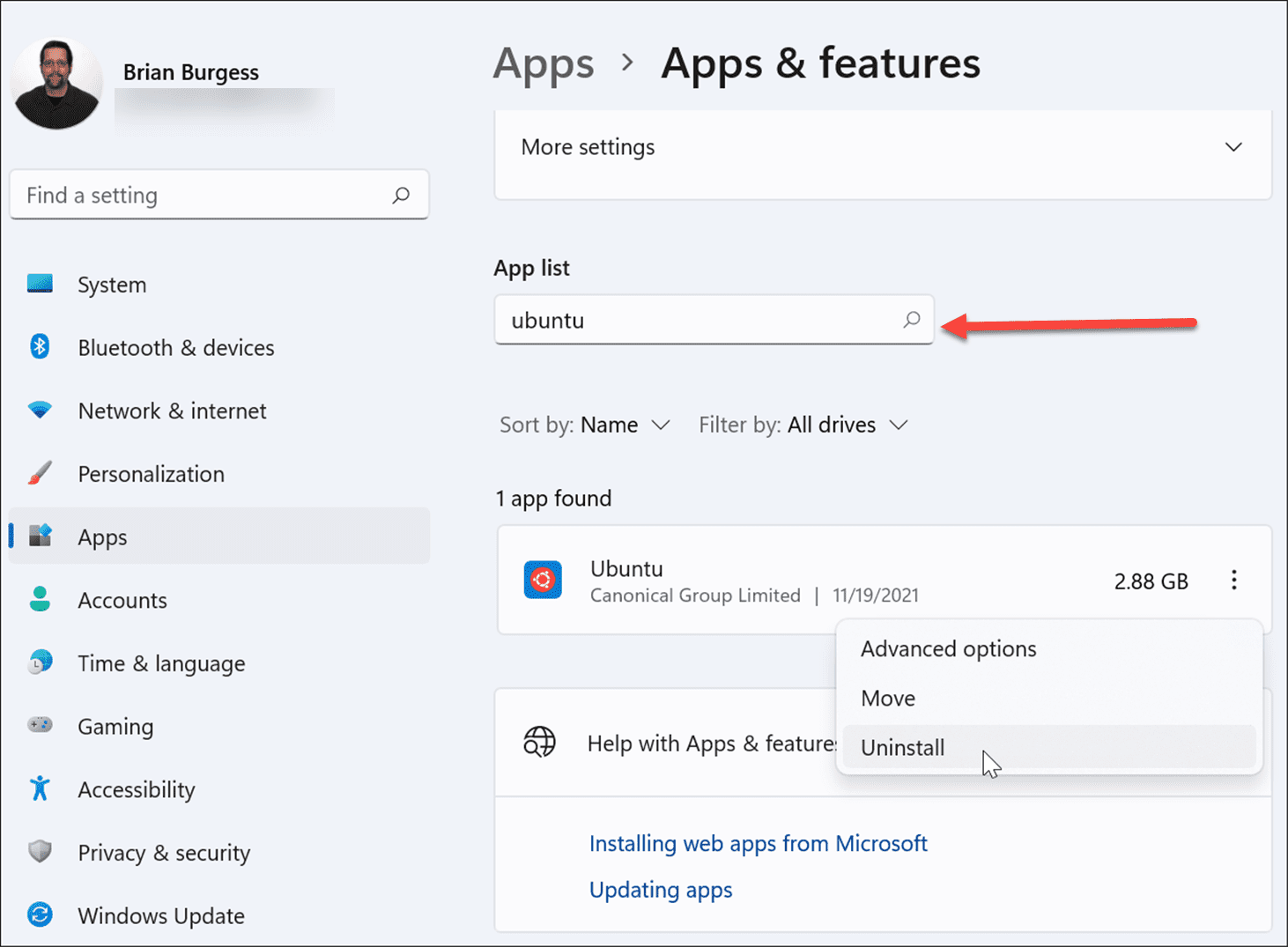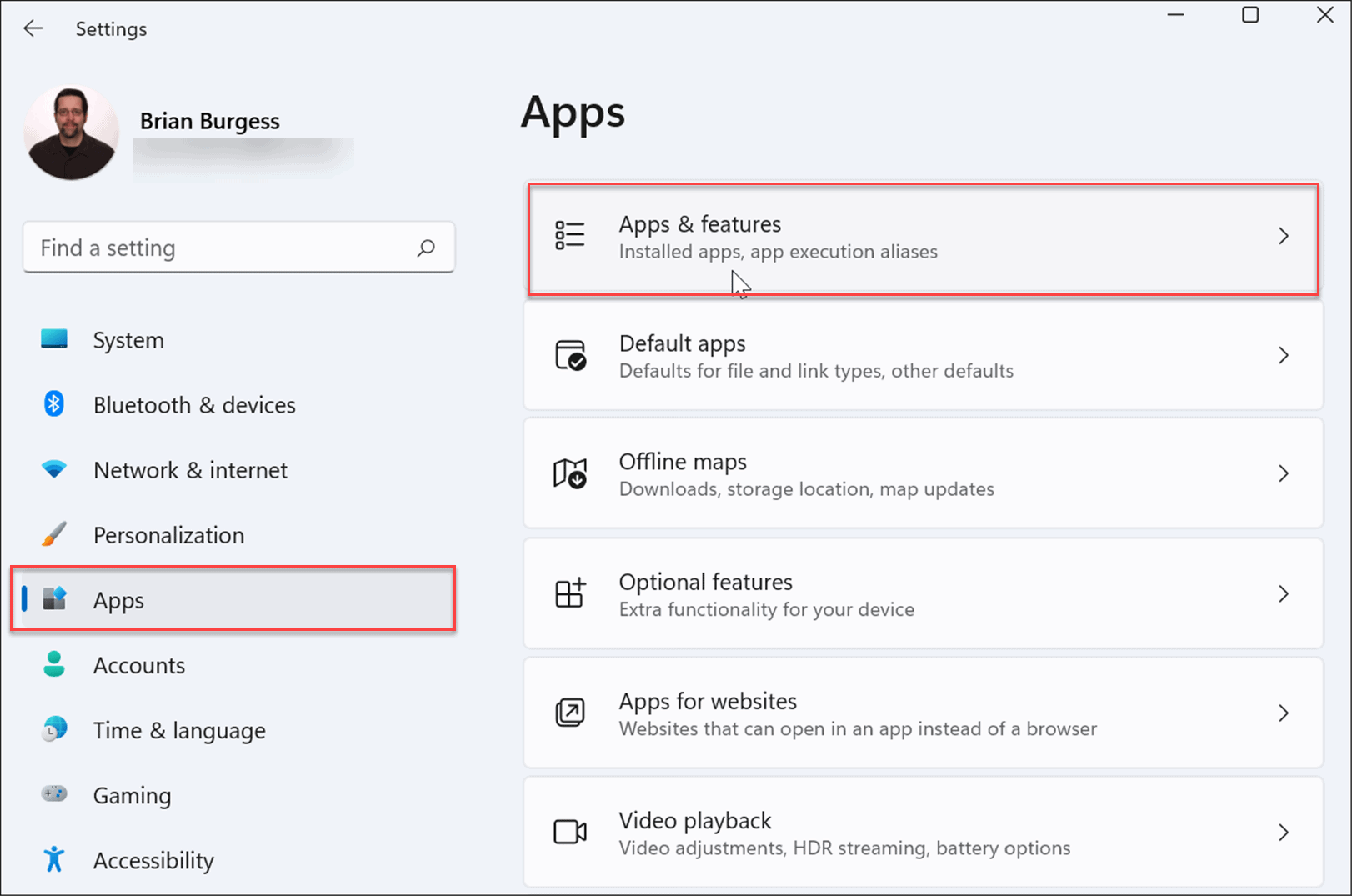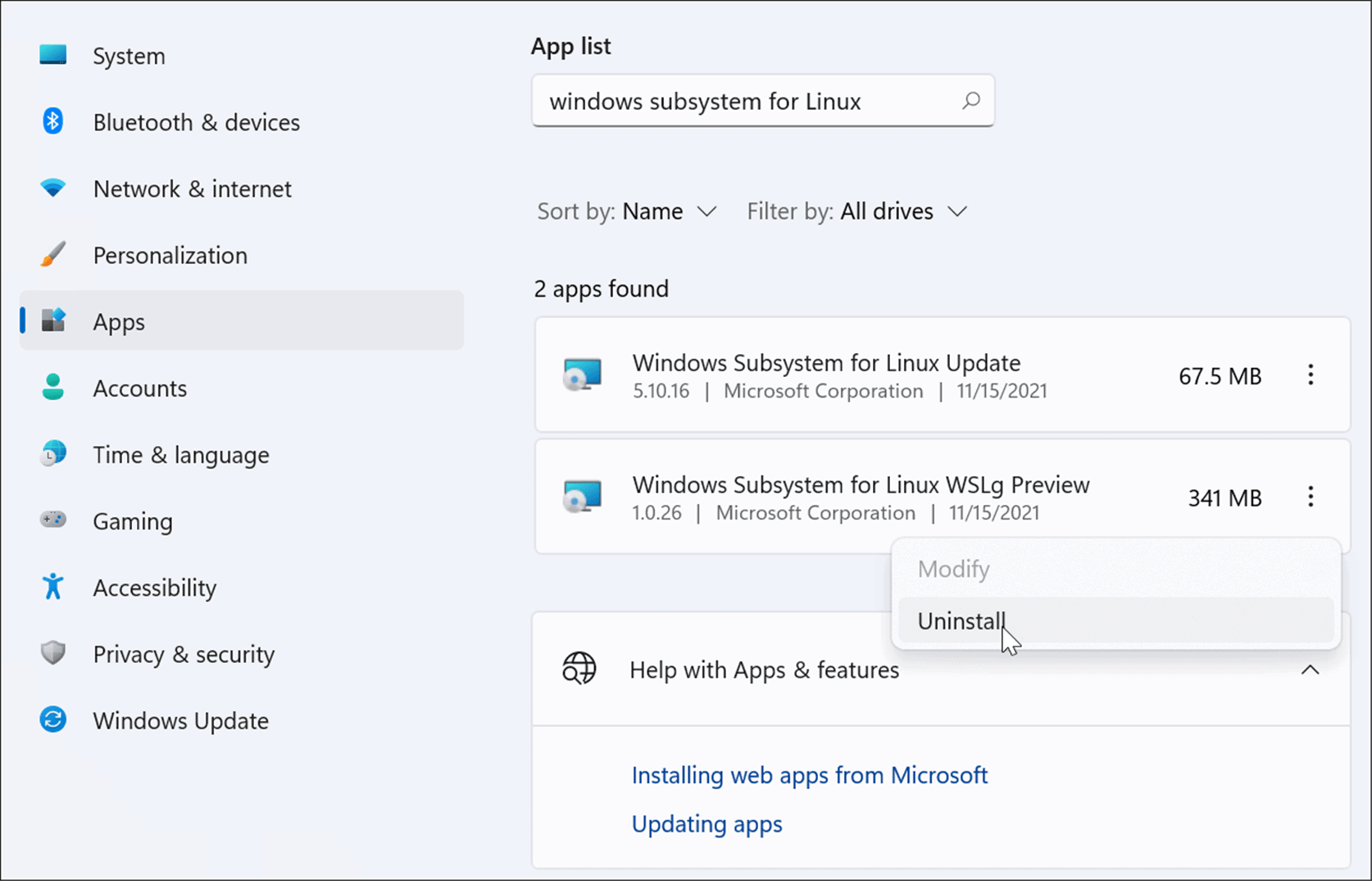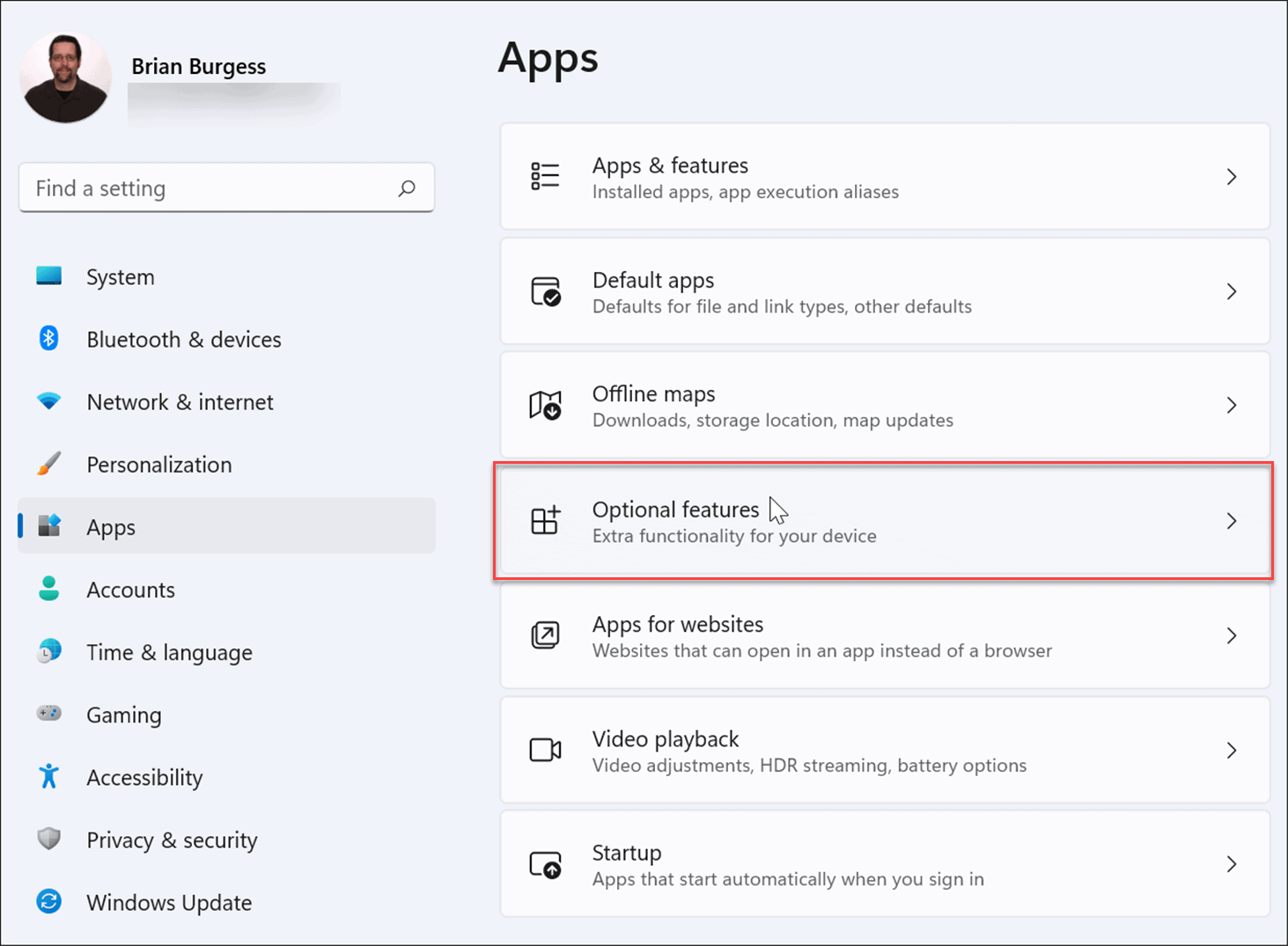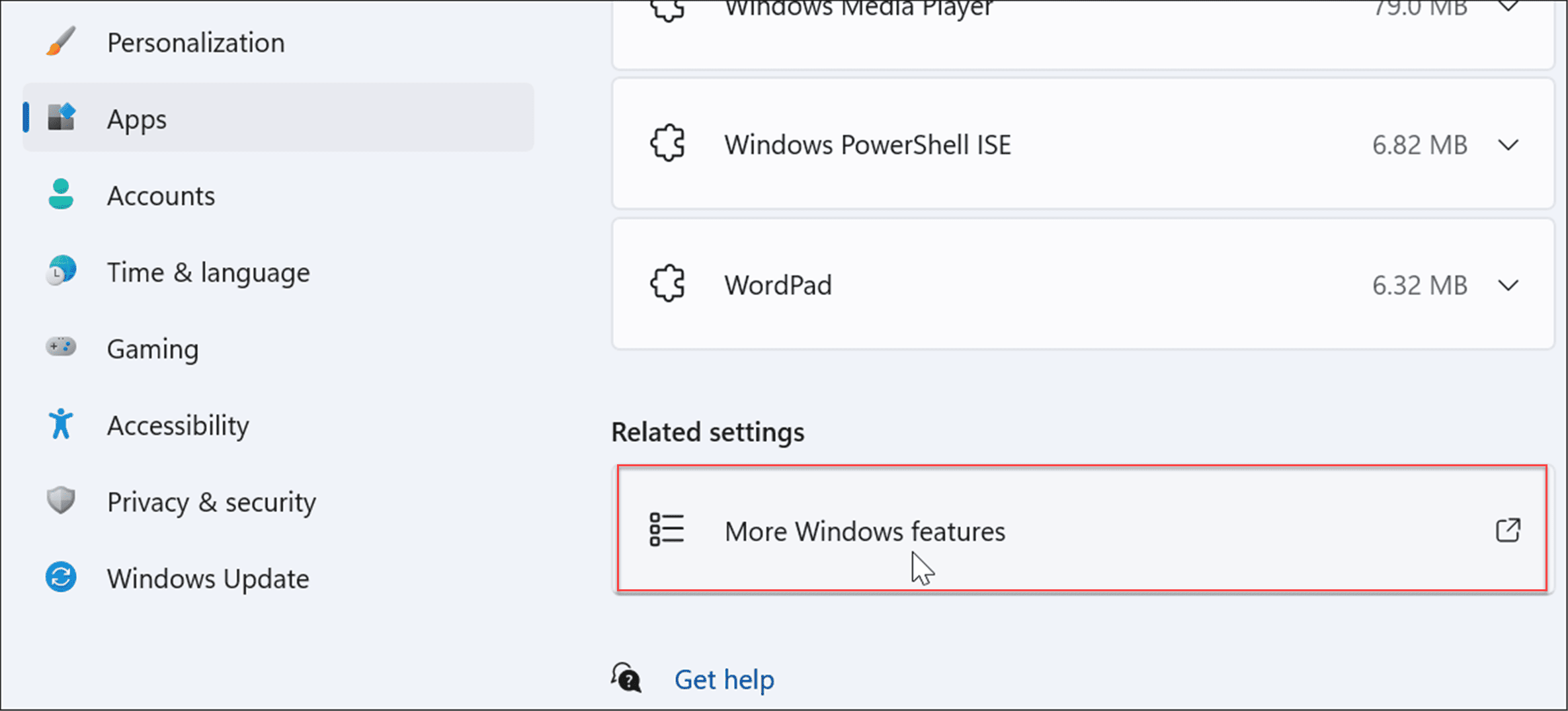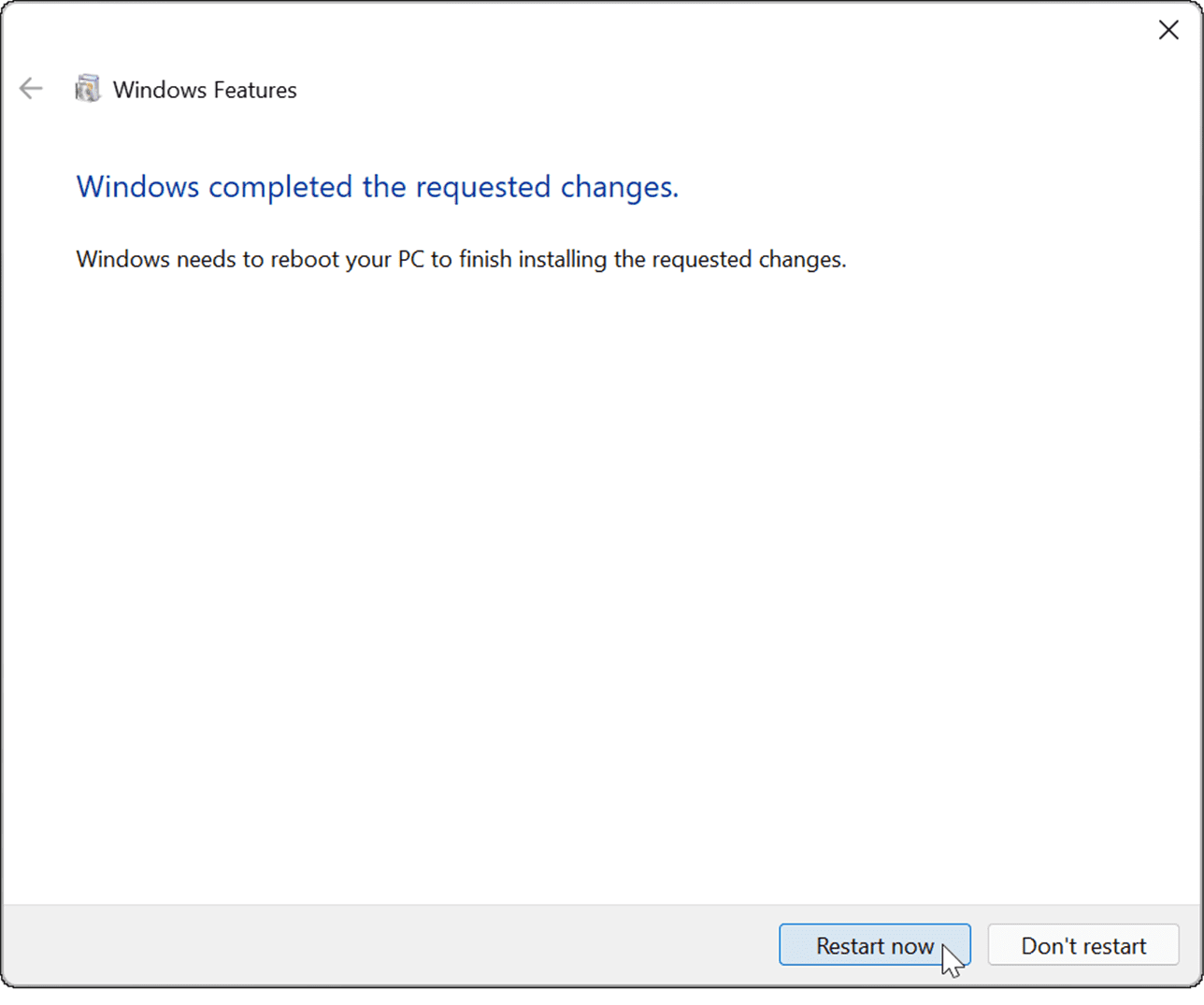One of the biggest problems with WSL, however, is space. Having a separate operating system installed can take up tens of gigabytes of space—space you might need to reclaim. The good news is that you can uninstall Linux from Windows 11 pretty quickly. If you don’t want Linux on Windows 11, you’ll need to follow these steps.
How to Uninstall a Linux Distro on Windows 11
The first step to removing Linux from your Windows 11 PC is to uninstall the Linux distribution you’ve been using. To do this:
How to Remove Windows Subsystem for Linux Components
If you’ve successfully followed the steps above, the Linux distribution will be removed. There are still other elements of the Windows Subsystem for Linux functionality that you’ll need to remove to reclaim some extra space, however. This includes the WSL kernel and some interface components. To remove these:
How to Uninstall WSL from Windows 11
To complete the removal of Linux from Windows 11, there is one last step to navigate—you’ll need to uninstall the Windows Subsystem for Linux functionality completely. To uninstall WSL from Windows 11, follow these steps:
After the restart, sign in to your computer. Linux and all relevant WSL components are now completely removed from Windows 11.
Linux on Windows 11
When you enable WSL on Windows 11, you can use Linux software on a Windows 11 PC simultaneously. Depending on your machine’s setup, it can be easier than creating a virtual machine to run Linux specifically. It’s certainly easier than creating a dual-boot system. However, if you no longer need WSL on your system, you can uninstall it by following the steps above. Windows 11 has other features that might interest you, like running Android apps. If you’re running retro apps or games, you may need to enable some other optional features, including enabling old .NET framework versions. Comment Name * Email *
Δ Save my name and email and send me emails as new comments are made to this post.
![]()

